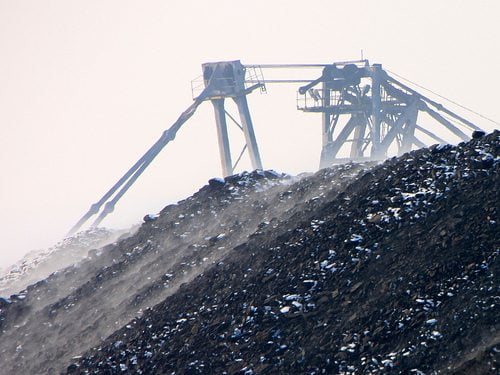

Energy
Europe Needs Coal Clampdown To Stop Dangerous Climate Change
Europe’s political leaders must dramatically ramp up efforts to phase out polluting coal plants if they are serious about preventing dangerous climate change, a new report shows. The study reveals carbon emissions from Europe’s ageing coal-fired power stations will have to come down three times faster than the current rate for the bloc to keep in line with global efforts to limit warming to 2C.
The findings are published as the world’s top climate diplomats are in the thick of negotiations over a new global plan to bring down planet-warming emissions at the UN climate summit in Paris.
Drawing on the most comprehensive database of Europe’s coal plants ever compiled, analysts from Sandbag and Climate Action Network (CAN) Europe have for the first time been able to put a number to the amount of carbon released by the 280 coal-fired power stations currently operating in the EU and its changes over time.
In 2014, Europe’s huge fleet of coal plants released a total of 762 million tonnes of CO2 – as much as the combined emissions of France, Spain and Portugal. [2] This accounts for nearly a fifth (18%) of the EU’s total greenhouse gas emissions, a slice nearly as big as that of the entire EU road transport sector (21%).
The report, commissioned by Greenpeace UK and CAN Europe, urges Europe’s leaders to get a grip on coal pollution by setting out clear national plans and deadlines to push coal off their energy system.
The UK has recently become the first G20 economy to announce such a plan, with the aim of retiring all of its coal plants by 2025. It was preceded by a similar move in Austria, which is now on track to become coal power free when the last plant closes in 2025. Finland had already committed to phase out coal by the 2020s.
Greenpeace UK energy campaigner Diana Vogtel said: “The verdict from our report is very clear: when it comes to coal emissions there can be no room for complacency. Unless Europe’s leaders take action to phase out the dirtiest fossil fuel, their creaking, polluting coal plants risk derailing the bloc’s efforts to stave off dangerous climate change. The clean technologies that can replace coal are getting cheaper and more efficient every year, whilst the impacts of coal on our health and climate have never been clearer. There are no excuses left for Europe not to kick its coal addiction for good.”
CAN Europe Director Wendel Trio said: “From Alberta in Canada to Finland and the UK, the leaders of advanced economies are already showing that it’s possible to put an expiry date on the age of coal. We now need a strong deal coming out of the Paris summit to give fresh impetus to a EU-wide clampdown on coal emissions. Phasing out coal is the easiest way for the EU to increase its climate ambitions.”
According to leading experts at the International Energy Agency (IEA), Europe’s carbon emissions from burning coal will need to fall on average by 8 per cent every year until 2040 to keep below the 2C warming threshold. But the report published today shows the bloc’s coal emissions have only come down by an average of 2.3 per cent a year over the last nine years.
The study also found that two thirds (66%) of Europe’s coal plants have been in operation for 30 years or more. This makes them particularly inefficient, polluting, and prone to breakdowns.
Coal plants are the world’s biggest emitters of CO2, accounting for nearly a third (31%) of all carbon released by burning fossil fuels, according to the IEA. The IEA have warned that globally coal emissions must halve by 2030 and be almost completely phased out by 2040 if the world is to stand a fighting chance of keeping warming to 2C. Research by University College London also concluded that 88 per cent of global coal reserves must stay in the ground if the world is to stay below the 2C threshold.
































